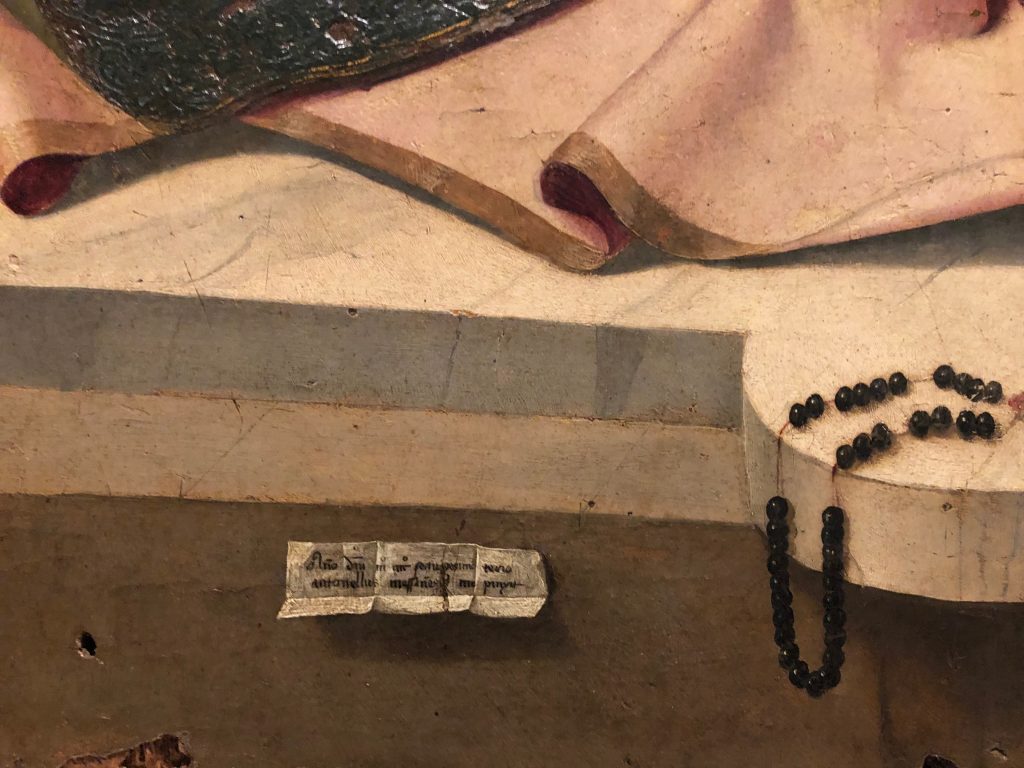Long time ago, a close friend showed me a little picture at the Prado Museum. “The Death Crist supported by an Angel “ An angel whose emotion is difficult to express with words The table has been part of the collections of the Prado Museum since 1965 and is currently exhibited in the magnificent temporary exhibition “A place of memory 1819-2019”
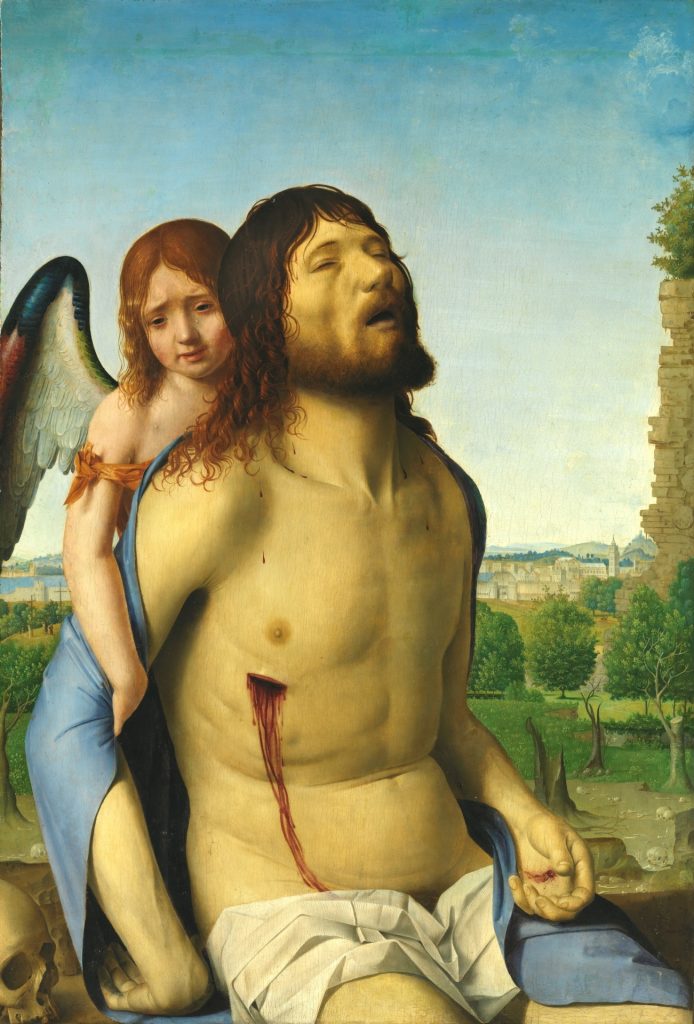
Antonello da Messina is probably the most important Renaissance painter in southern Italy, known for his early mastery of the Flemish technique in oil painting (Giorgio Vasari at his book “ The lives of the most excellent painters…” thought that he was a formal Jan Van Eyck student…maybe both met in 1456 in Naples). Many details of his life are unknown, we know he traveled through Italy, he learned the Florentine rules of mathematical perspective and foreshortening. We know that in 1475 he traveled to Venice where he received many commissions … he worked almost certainly for the Sforza Family in Milan and died in his native Sicily at the age of 49 .
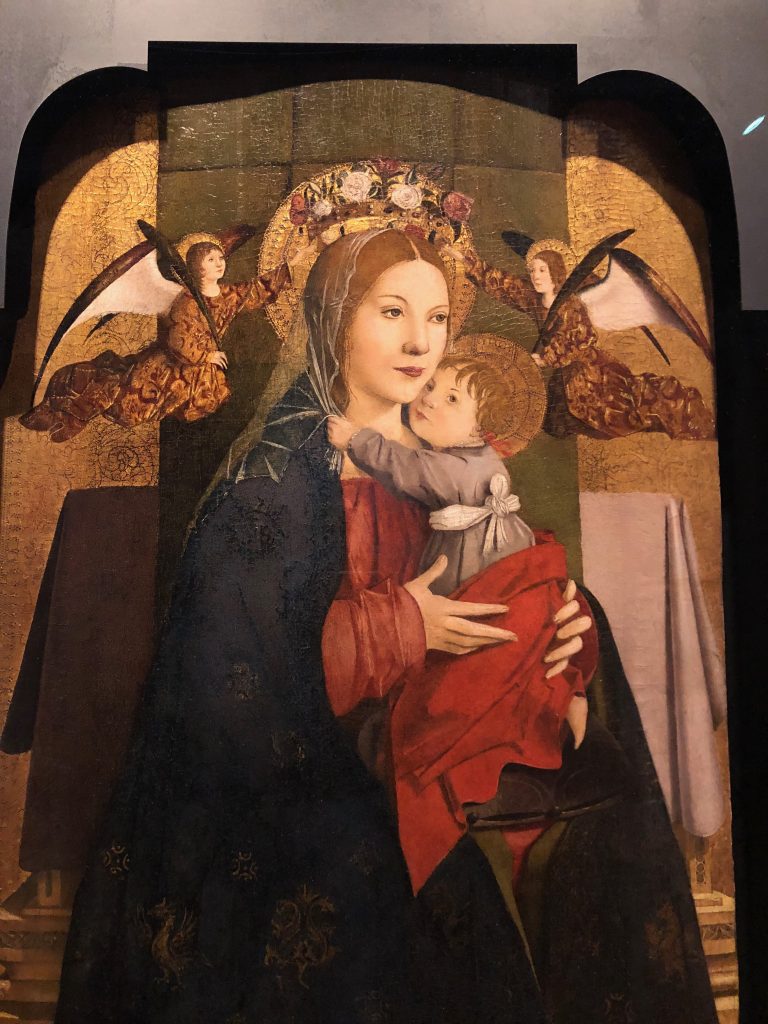
Antonello da Messina elaborated a perfect combination between Flemish painting, the Italian experiences of the Quattrocento, the vision of color and the light of Venetian painting, which caused a great impact and certainly it was difficult to find something similar in other contemporary painters.
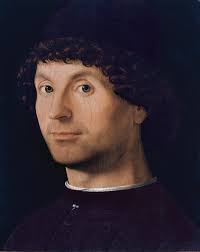
Following the footsteps of an artist is a good excuse to travel. Shortly after the Angel of the Prado caught me… I remembered that strange knight from the Thyssen Museum that looks at you while you are trying to look at Giovanna Tornabuoni by Ghirlandaio.
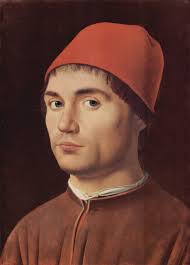
That man challenged me to visit “Saint Jerome in his Study” at the National Gallery. A work full of symbology, perspective and detail … but the expression in his portraits is something really prodigious … so I decided to meet the Christ of the Column of the Louvre and after this masterpiece many more portraits came, in Berlin, in Cefalù, in Manhattan.
And my curiosity forced me to visit Sicily in order to meet his “Annunziata” ( nickname the Sicilian Gioconda) We met in 2007, she was waiting for me behind a curtain, in a dark red room. Located in a small museum in Taormina, Palazzo Corvaja. The summer was hot and when the curtain was removed, an icy wind paralyzed me.
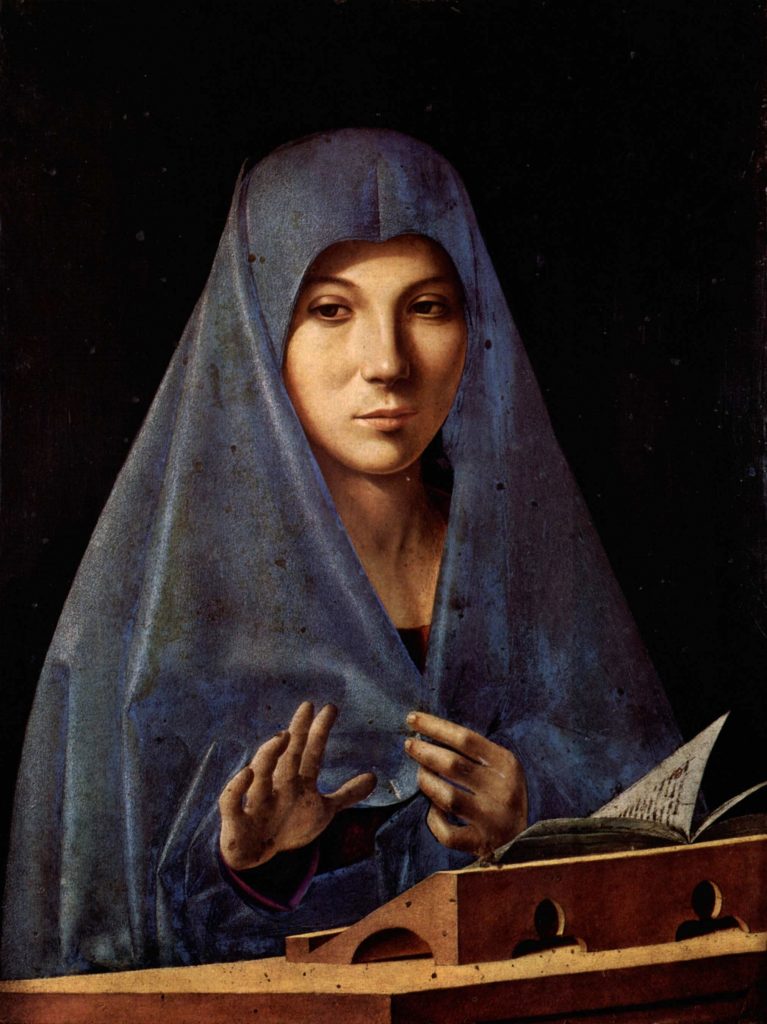
Virgin Annunciate
Lofty/ Divine / Sublime
The Virgin is located in front of a book whose pages probably moved as a result of a small wind blow, or perhaps it was the wings of the Angel who was hurrying away. Her right hand is raised as if greeting or, possibly, expressing fear. Her other hand seemed to want to close the cape, conceivably to protect or guard her virginal breast that had just been visited. Her gaze, absorbed and peaceful at the same time, left no room for doubt: that woman had just been visited … then you feel that you are just a simple spectator of a glorious moment.
And you understand that “Art can heal your soul “
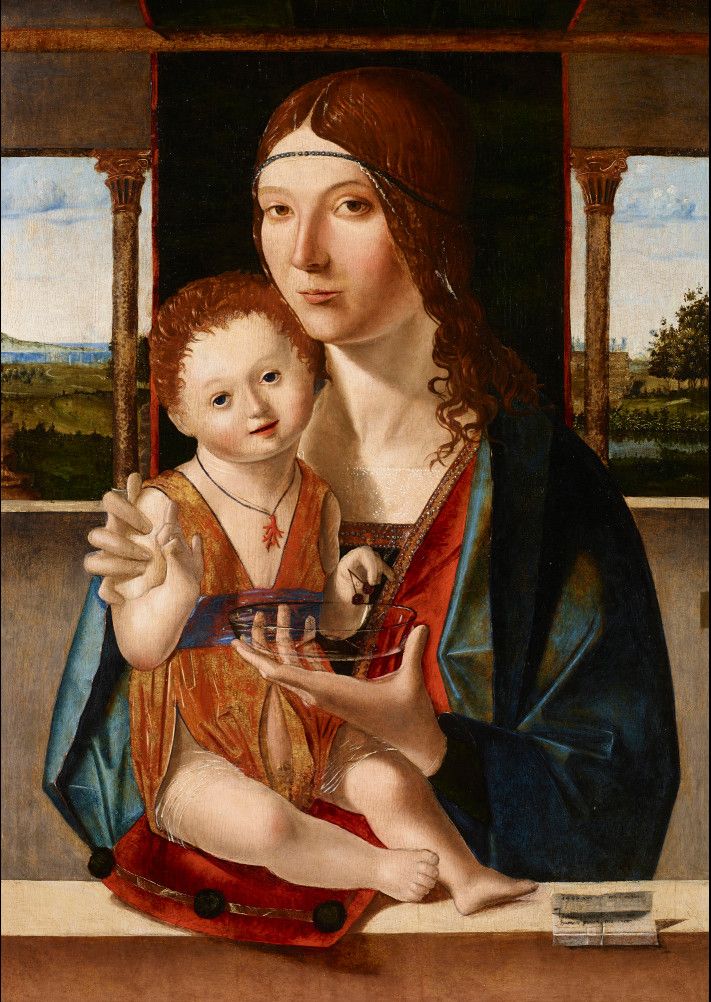
It has taken me 11 years to visit her again, to have the great privilege of attending the opening of a temporary exhibition about Antonello at Palazzo Abatellis, that will last until February 10, 2019. The Annunziata has not moved from her room perfectly designed for her; the light enters through the Renaissance window from her left side and before the lights of the museum are lit, the break of dawn is admirable on her wonderful blue robe.
The Abatellis is an intimate museum, a prodigy of mixture between modernity and classic art where you do not get tired of walking. I returned every day of my stay in Palermo, especially to admire every detail painted so prodigiously by this Renaissance genius, perhaps, not recognized enough.
